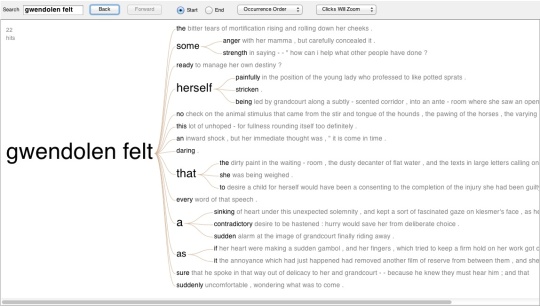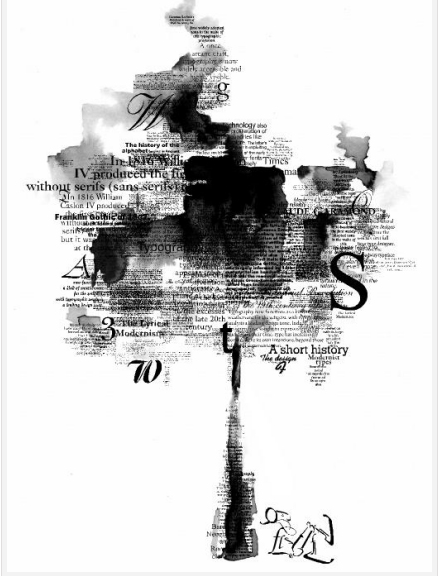What Are We Doing With Our Visualizations?
A colleague of mine pointed me towards the following post about Shock and Awe Graphs in the Digital Humanities. The author, Adam Crymble, makes some decidedly thought-provoking points about what graphs are meant to be doing and how data visualization can sometimes work as a tool of intimidation as well as elucidation.
So before you publish a visualization, please take a moment and step back. As in the cult classic, Office Space, ask yourself: Is this Good for the Company?
Is this Good for Scholarship?
Or am I just trying to overwhelm my reviewers and my audience?
The authors of the blog Clioviz respond to Crymble’s question with a post In Praise of Shock and Awe, which also (and unsurprisingly) has some very good points to make about the value of disseminating information via visualization. They note that a certain amount of “shock and awe” in inevitable in fields like ours where the mere existence of plotted data points is enough to give some scholars palpitations. The main thrust of their argument, however, is that complex, beautiful and awe-inspiring graphs are not inherently a bad thing when they are usable. If a graph is complex to the point of unreadability, that is usually because the graph-er was attempting a kind of elegant complexity and failed. (This, of course, returns us to one of the basic problems of DH: we’re doing things we were never trained to do and the success of being able to do them at all blinds us to the necessity of doing them well.)
Both pieces make certain assumptions that I think we, as the Ludic Analytics group, are not willing to make. The first is that visualizations exist to convey information to the reader and the second that visualizations must have some immediately identifiable utility. The visualization presented at the beginning of Crymble’s piece is meant as a joke, but because a) he doesn’t provide any more serious examples and b) the point I’m trying to make works just as well, I am going to pretend it is real and assume that if I can answer his reductio ad absurdum with logic, then said logic can surely be applied to more reasonable work. Like others of its ilk, this image a piece of art I would frame and hang on my wall rather than a readable graph. It offers very little in the way of interpretation to the untrained viewer and is, as Crymble says with his tongue firmly in his cheek, about 18th century cattle’s preference for south facing barns. Crymble is frustrated when asked to view graphs like this as proof. However, were there no image whatsoever–had he merely read a paper that claimed to have looked at the data and found that cattle preferred south-facing barns–I would imagine he would have had less trouble with the assertion. This visualization exists because it can, not because it makes any particular point. It is there to be beautiful. And were it real, it would also show that the researchers engaged with the data to the extent necessary to produce such a graph. It would not be proof of point, but proof of process. And I would imagine that the task of creating such a visualization and dealing with the information would give the researchers a better understanding of their data, even if the visualization lacks a trickle-down effect of understanding to the reader.
This brings me back to something I had discussed earlier, which is that our data always seems to be more useful for ourselves than for our readers. This may explain why the scholarly article and book have had such a long life; they don’t simply convey understanding, they enact it as well. Close reading recreates, in the article, the process through which we imbue texts with meaning. The act of applying historical research to a volume of literature mimics the act of research and the flash of understanding that comes when one grasps how a specific historical fact is relevant to the text at hand. Articles are processes, they are a temporal movement towards the end of an argument. Visualizations, however, lack that sense of journey. They are always, already, at the end even when you, the reader, are still at the beginning.
I can think of several possible solutions to this problem. One is to accompany visualizations with detailed descriptions of their genesis (Stephen Ramsay does this to good effect in his article “In Praise of Pattern”). Another is to create dynamic visualizations that can operate on a temporal as well as spatial scale. For example, imagine a social network graph where you can watch the edges build up between the different nodes while the nodes move around to create different groupings as the networks grow over the course of a novel. You could even have edges fade slightly if a connection has not been mentioned for over ten chapters, for example. As might be evident, I find this idea truly exciting and would love to imagine a novel performed as a network graph. A third option would be to use the visualization not as proof of theory, but as a starting point for the reader to form her own conclusions about the topic. The visualization becomes a way to share data rather than results and the reader is invited to tell her own story with it (I am drawing this idea from N. Katherine Hayles’s new book, How We Think). The data, and database, are an interface where textual exploration can happen rather than a static image of exploration someone else has already done.
These last two solutions require a somewhat radical rethinking of data presentation. Putting the visualization in as “(fig. 3)” on page 6 of the printed article is no longer going to cut it. Articles are very good at what they do, which is provide a forum in which to recreate traditional practice so that the reader can experience it along with the author. If we want our readers to experience our non-traditional readings along with us, we’re going to need non-traditional modes of delivery to do it.









